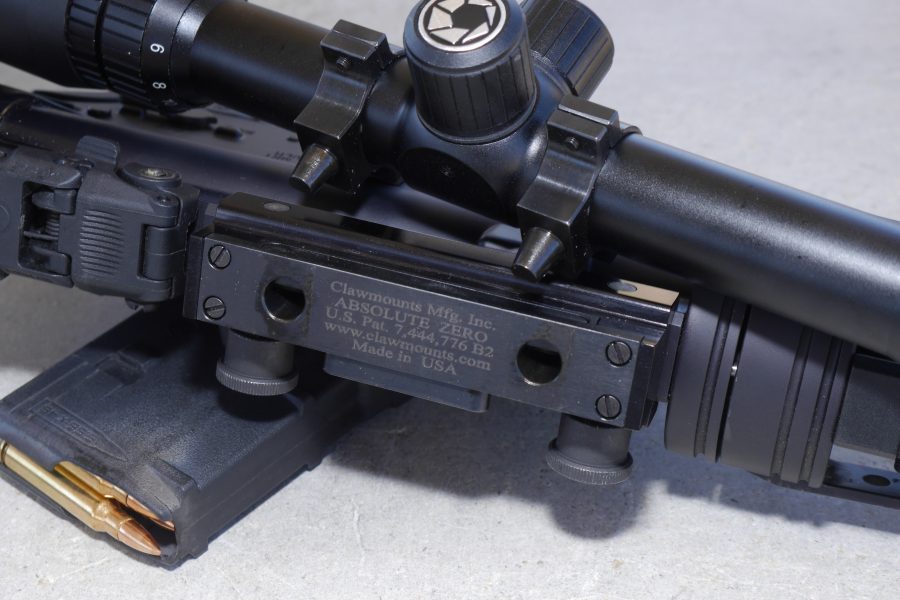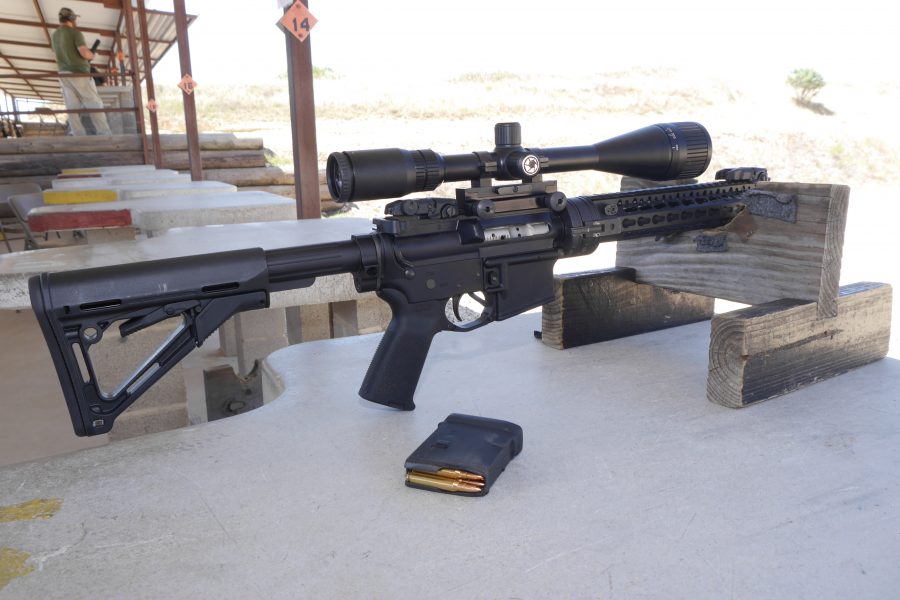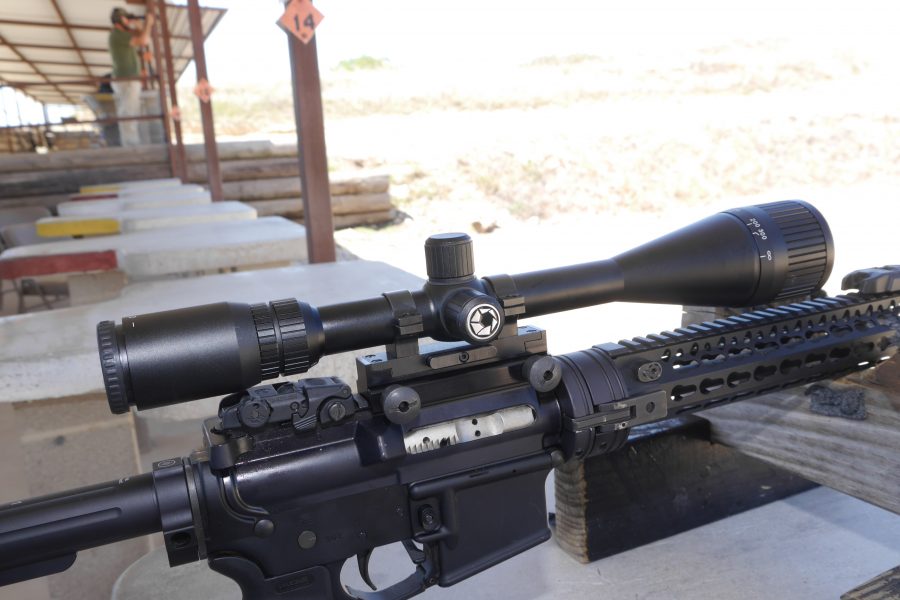
“Beware the man who owns only one gun.” That’s the old adage, but while having only one gun usually means you know it inside and out. You also probably know that using one gun can make things difficult when moving from one environment to another.
There’s a pretty big difference between the gear needed for a short range 3-gun competition and a longer range hunting trip, and while the same rifle might be up to both tasks the optics definitely will not. That’s where the utility of a quick detach scope mount comes into play — a system that allows the shooter to swap out their optics without needing to re-zero them every time. The folks at Clawmounts think they’ve got a solution that works not only for the AR-15 platform but also for your Mauser and Winchester bolt action rifles, too.
First, let’s define some terms. When you “zero” your rifle, the desired end goal is that at a given distance (like 100 yards) wherever you put your aiming indicator (crosshairs, red dot, what have you) and pull the trigger a hole will appear in the paper. If you’ve done it correctly, there will be no difference between your aiming indicator and those newly formed indentations.
Most shooters consider this a one-and-done process — they zero the gun once and never touch it again. They don’t adjust the knobs, remove the scope…nada. This made sense back when cheap scopes were terrible and the adjustment knobs couldn’t be trusted (six clicks to the left didn’t always equal six clicks to the right) but with modern scopes and mounts the state of affairs has improved greatly.
Quick detach systems definitely aren’t anything new. Companies such as LaRue Tactical and Warne have been making detachable scope mounts that can return nearly precisely to zero even after removing the scope from the gun and re-attaching it some time later.
What’s new about the Clawmounts system is that the mount stays on the gun but the rings are removable. To remove the scope rings you press a button on the side of the mount and the rings pop free. Re-attaching the scope is just as easy: position the tapered pins on the proper holes and slam it home. Quick and painless — quicker than the typical throw lever method even.
The benefit to AR-15 owners is marginal — the common Picatinny rail mount systems are good enough for most shooters — but for bolt action rifle owners the Absolute Zero reduces the number of parts needed to get the same benefit. Instead of needing a Picatinny rail in addition to the quick detach mounts, the Absolute Zero system attaches directly to the drilled and tapped holes in your receiver.
I slapped the scope mount on another rifle I have in for testing and zeroed the scope. Then I removed the scope, re-attached it, and fired a couple more rounds. Then I removed the scope again, waited a couple days, and re-attached it for further testing following the same process. What started off as a 1/2 MoA 3-round group enlarged a bit over time, but the center-to-center distance of the groups never shifted more than 1 MoA (1 inch at 100 yards).
The real question is whether the Absolute Zero is worth the price. Clawmounts asks $215 for their QD mount, which is a mere $5 more than LaRue wants for a product that works in a similar manner. That’s $130 more than Warne’s QD scope rings.
The actual functionality is more than acceptable for the average shooter and works just fine even for the longer range hunting crowd. On the AR-15 platform I would definitely recommend going with the other options. But when you consider the benefits of the single piece mount over the existing QD solutions for Winchester and Mauser rifles this platform really shines. If you’ve got a Winchester bolt action rifle then I’d definitely recommend giving this a look.
Specifications (Clawmount Absolute Zero System):
MSRP: $215
Ratings (out of five stars):
Quality * * * *
The machining is great, but the knobs leave something to be desired. Rather than the finger tightening system I’d much prefer some proper nuts so I can get my torque wrench on there and tighten them down.
Function * * * *
For the average shooter this is more than sufficient. Precision shooters might want to look at other options, though.
Overall * * *
Three stars is “worth the price” and I’d definitely put the Absolute Zero in that category. I love the innovative design with the push-button release and tapered pins, but considering the competition there are other options that work just as well for far less money.







$215?
*faints dead away…*
“Most shooters consider this a one-and-done process — they zero the gun once and never touch it again. “
A shooter with that mindset is certainly not serious about marksmanship.
Most shooters aren’t serious about marksmanship, so yeah.
Maybe your groups moved because you installed a Barska scope (known for their value, not precision/repeatability) on that test rifle???
I’ve not had any issues with the Barska scope I own; I just don’t expect it to perform like a $2000 scope and my expectations for it are met. It holds zero just fine and works adequately at the 200 yards and closer ranges I’ve been able to shoot it at. But I’m not a tacticool tactically operational operator so what do I know.
Omg a barska! In my ignorance some time ago, I bought a barska for like $30. I would recommend you take that off and give it to a young kid to play with.
That and overpriced MagPul plastic BUIS.
I had those things for awhile… they spent a week on one of my rifles before I ditched them.
Shouldn’t that be BUPS? When your back-up is made of plastic, you’re probably not too serious about anything aside from cost. If they ever end up needing them, that’ll likely be the day they realize the mistake they’ve made.
I like iron as well, but when we’re discussing a rifle with a plastic buttstock, grip, frequently handguard, and typically plastic magazines, it’s kind of hard to get too worked up if another critical part is polymer. Heck, depending on the rifle, even the lower might be made of plastic.
http://kitup.military.com/2012/07/back-up-iron-sight-drop-test.html
The first BUIS dropped was the Diamondhead. At first, damage appeared cosmetic only; however, the apertures could no longer be rotated, windage could not be adjusted, and there was a definite cant to the BUIS. Point of impact shifted approximately 16 MOA. We contacted Diamondhead with this result. They replied that a newer version was available which was more durable. We offered to test the new model but production issues meant they could not ship one to us.
Next came the Troy sight. Cosmetic damage was apparent, but the sight could still be operated normally. Point of impact shift was approximately 3 MOA.
The last set of BUIS was the Magpul MBUS. Damage was purely cosmetic and the sight remained fully functional. Point of impact shift was less than 1 MOA. Unlike the other sighting devices, a second drop was performed. Results did not change, and the sight remained functional.
Back up iron sights from Diamondhead, Magpul and Troy after being dropped on concrete.
Prior to this test, I didn’t think much of the MBUS; I now have a different opinion. In any case, it’s fair to say that I found the results of this experiment educational and informative.
[ Andrew Tuohy served with the US Navy as a Hospital Corpsman HM2 (FMF). Today, when not blogging, he is the “Resident Firearms Guru” at LuckyGunner.com. ]
Yeah, I use them, they are inexpensive, dependable, and reliable.
I’m not quite seeing the advantage for a bolt rifle over using a one-piece Picatinny or Weaver rail and a set of Warne (or other) QD rings. Weight difference is probably negligible or favors the rail mount based on the photos, a slotted base allows for more options and allows for mounting closer to the bore, the rail mount will work satisfactorily for most shooters and it’ll probably be about half the price when all’s said and done.